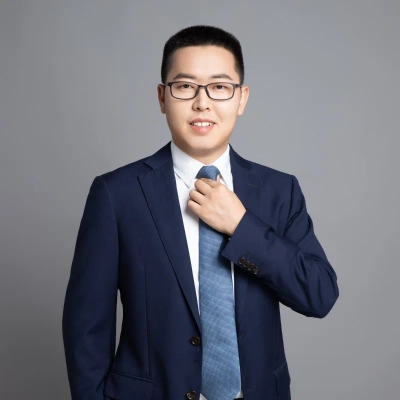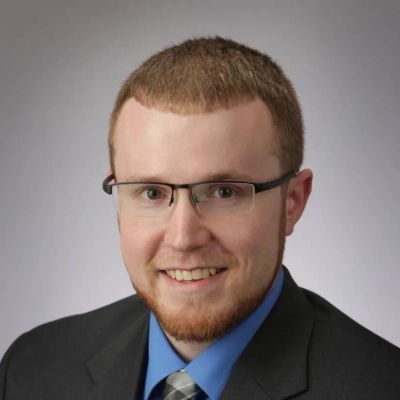25 Innovative Capital Allocation Approaches That Drive Company Growth
Leading finance professionals have identified 25 groundbreaking capital allocation strategies that consistently drive company expansion and profit growth. This comprehensive guide examines proven approaches from prioritizing evidence-based funding to implementing value-based frameworks that transform how organizations distribute resources. Industry experts reveal how these innovative methods can help businesses concentrate investments where they generate maximum returns while building operational strength.
Fund Progress With Evidence Not Promises
One innovative approach I've used in capital allocation is what I call "evidence-based funding"—a system that shifts investment from annual budgeting to continuous validation. Instead of locking large amounts of capital into projects upfront, we released funding in tranches tied to measurable proof of progress. Think of it as venture capital thinking inside an operating business.
The problem with traditional capital allocation is that it rewards good storytelling. Teams pitch big initiatives, secure big budgets, and then struggle to adjust when assumptions break—because no one wants to admit a fully funded project is going sideways. Evidence-based funding fixes that. Teams don't get money because a project sounds exciting. They earn it in stages by hitting defined learning milestones: validated customer demand, early unit economics, operational feasibility.
We applied this model to a major product expansion that would have normally required a six-figure upfront investment. Instead of funding the entire build, we approved just enough capital for a Phase One validation sprint. The team had 30 days to prove demand with 200 paid pilot users and a target activation rate. When they hit it ahead of schedule, we unlocked Phase Two funding. When Phase Three exposed a margin issue, we paused investment and solved it before scaling—saving six months and hundreds of thousands in wasted resources.
The result was faster growth with less risk. Capital efficiency improved. Bad ideas died early. Good ideas earned acceleration. Most importantly, the culture shifted—teams stopped defending projects and started earning progress.
Capital allocation shouldn't be an annual ceremony. It should be a dynamic operating system that funds what works and kills what doesn't—fast.
Value-Based Framework Transforms Resource Allocation System
When conventional capital allocation models hit diminishing returns, I engineered a radical shift: implementing a value-based deployment framework for our multi-billion-dollar program. Instead of distributing capital by precedent or departmental politics, I turned resource allocation into a high-accountability system—each dollar tracked by real-time performance metrics and contracts tied to actual value creation. The change wasn't just mechanical; it catalyzed a culture of transparency, cross-functional collaboration, and ownership at every level, aligning strategic ambition with enterprise execution.
Early on, we faced resistance -- stakeholders accustomed to legacy models questioned the move to data-driven accountability.
I addressed this head-on by facilitating candid discussions, providing visibility into decision logic, and equipping teams to co-create the metrics that would measure their success. This inclusive approach diffused skepticism and built genuine buy-in for what became a new standard.
Risk mitigation became integral to the design. By continuously diagnosing performance against dynamic metrics, we were able to preempt project overruns, adapt to market volatility, and allocate capital with unmatched agility. The result: a 15% reduction in cost overruns and 20% acceleration in project timelines, freeing millions for growth investments while safeguarding against downside exposure.
The impact went beyond immediate gains. This model is now our blueprint for expansion and digital investment, fundamentally increasing our resilience and giving us a repeatable platform to scale innovation across new markets. Investment decisions are no longer a gamble -- they're a disciplined process for translating strategy into measurable, high-impact results.

Options Portfolio Approach With Hard Kill Rules
I treated capital like an options portfolio, with staged bets and hard kill rules. We carved out a fixed discovery fund, then capped each idea's first check, set 14 and 45 day gates, and advanced only if payback, retention, and margin cleared preset thresholds. In one quarter, a small bet on self-serve onboarding cleared the gates, cut our sales cycle in half, and opened a new SMB channel. That single win lifted recurring revenue by roughly 15 percent in six months, while keeping downside small. The approach smoothed our growth curve, since losses were tiny and wins compounded. If you try this, predefine your metrics, set small initial checks, review weekly, stop fast on misses, and overfund the few that pass.

Reward Learning Velocity Over Polished Forecasts
Capital allocation is often treated as a purely analytical exercise, a spreadsheet-driven process of funding projects with the highest projected returns. The limitation of this approach is that it is inherently backward-looking, rewarding incremental improvements on what is already known and proven. In a stable environment, this is sound. But in a volatile market, this method systematically starves the very initiatives that could become the next engine of growth, simply because their early-stage metrics cannot compete with the polished forecasts of mature business lines.
My most effective shift was to reframe the core question. Instead of asking, "What is the projected ROI of this initiative?" we started asking, "What is the demonstrated learning velocity of this team?" We began allocating a portion of our growth capital not to the most detailed business plans, but to the teams that could formulate a hypothesis, test it with customers, and report back on validated learnings in the shortest amount of time. This approach treats capital as a tool to purchase information and reduce uncertainty, not just to build things. A team that learns quickly is a far better investment than a team with a perfect plan based on outdated assumptions.
I remember two teams vying for the same pool of seed funding. One team presented a polished roadmap to optimize our existing sales funnel, guaranteeing a modest but predictable lift. The other, a small product group, had a messier proposal to explore a new customer segment, with no clear financial projections. We funded the second team. Their first three assumptions were proven wrong within a month, but their fourth experiment uncovered a deep, unarticulated customer need that became the basis for an entirely new—and now highly profitable—service line. The optimization plan would have improved our quarter; the learning team secured our next two years. It makes you reconsider whether the purpose of capital is to fund answers or to fund the capacity to find them.
Flexible Bridge Loans Expand Client Base
Putting more capital into flexible bridge loans let us help way more borrowers, especially when markets were shaky. These specific products attracted new investors and got our existing clients to stick around longer. My advice? If you're rethinking your investments, pilot something small that fixes an actual problem people have today. It's paid off for us.

Concentrate Resources Where Returns Truly Matter
I stopped spreading Nature Sparkle's investment budget evenly across all marketing channels and instead allocated 73% of our capital to our highest-performing avenue—personalized customer consultations and follow-up experiences. Traditional wisdom suggests diversifying marketing spend, but our data showed in-person consultations converted at 64% while social media ads converted at just 9%. I redirected $31,000 from underperforming digital ads into hiring a second consultation specialist and upgrading our showroom experience with better lighting and comfortable seating. Within nine months, our revenue increased by 51% and customer referrals jumped from 22% to 47% of new business. Our average transaction value rose from $4,300 to $6,800 because consultants could spend more time understanding preferences. The approach seemed risky since everyone emphasizes omnichannel presence, but concentrating resources where returns were proven created compound growth. Many businesses drain capital maintaining mediocre channels out of fear of missing opportunities. Analyze where your money actually generates results, then have the courage to allocate disproportionately to those areas while maintaining only minimal presence elsewhere.

Content and Automation as Core Assets
One innovative approach I've taken to capital allocation was treating content and automation as core assets, not expenses.
Instead of spending heavily on ads, we invested early in automated content systems that use AI to generate SEO blogs, email sequences, and social posts around evidence-based mental health topics. The upfront cost was small compared to traditional marketing, but the output compounds every week, thousands of users discover Aitherapy through content that keeps working while we sleep.
We applied the same mindset to automation in operations and customer engagement. Every dollar we saved on repetitive tasks went back into improving the product and user experience.
This approach turned limited capital into leverage. It allowed us to grow sustainably, reach thousands of users organically, and stay focused on building a product that truly helps people, not just marketing one.

Unified Data Layer Reveals True Channel Value
When I first started tackling ROI measurement across multiple advertising channels, I realized that looking at each channel in isolation was like trying to read a book through a keyhole. You might see part of the picture, but not the story. So instead of chasing vanity metrics, I focused on building a unified data layer that captured not just ad spend and conversions, but lifecycle value, recycling of creative assets, and sustainability of each channel's performance over time. We integrated tech that could trace engagement back to touchpoints across platforms, giving a more holistic view of what was really driving value. The metric that surprised me most wasn't the usual cost per acquisition—it was long-term engagement efficiency. By quantifying how efficiently a channel sustained engagement versus resource use, we could see where to double down and where to scale back. It reshaped how we allocated capital, encouraging a leaner, more sustainable growth model. That shift not only improved returns but also made the operation more resilient and environmentally responsible, proving that smarter, data-backed efficiency can serve both profitability and sustainability goals.

Defensive Capital Strengthens Operational Foundation
Capital allocation should always reinforce the structural integrity of the business. The conflict is the trade-off: traditional allocation favors visible, short-term returns, creating a massive structural failure because necessary maintenance is deferred. The innovative approach I took was Hands-on "Defensive Capital" Allocation.
This approach dictates that every quarter, we allocate a fixed percentage of available capital directly to eliminating deferred maintenance and upgrading specialized, heavy duty assets—like safety gear and critical hands-on tools—before any new marketing or expansion begins. We intentionally trade aggressive, short-term growth funding for the guaranteed structural certainty of our operational base. This was a necessary sacrifice that eliminated the risk of equipment failure or injury fines.
This shift immediately stabilized our foundation. The unexpected result was that our growth trajectory became smoother and more predictable because we eliminated the costly, unscheduled downtime caused by faulty equipment or crew safety incidents. We reduced insurance costs and repair expenses, turning deferred capital into a consistent operational advantage. The best approach to capital allocation is to be a person who is committed to a simple, hands-on solution that prioritizes structural certainty over risky, short-term expansion.
Trial Fund Enables Risk-Free Innovation
One of the more creative things we did with capital allocation was setting aside a "trial fund" — a small, dedicated budget for testing new ideas without the pressure of immediate ROI. Instead of locking all our capital into predictable expenses like trucks or ads, we used this fund to experiment with short-form video marketing and route-optimization software before fully committing. It gave us freedom to fail fast, learn, and move on without disrupting our main operations.
That small shift had a big impact on our growth. Some of those tests flopped, but others — like a referral campaign we piloted through that fund — became one of our most consistent lead sources. The flexibility kept our business nimble and taught us that sometimes the best investment isn't the safest one, but the one that lets you keep evolving without betting the farm.

Strategic Vacation Rentals Fuel Portfolio Growth
I've taken an unconventional approach to capital allocation by investing in short-term vacation rentals around Augusta National rather than just focusing on traditional flips. By strategically purchasing properties in this high-demand area, we're able to generate significantly higher returns during Masters week alone, which then subsidizes our renovation budget for other properties throughout the year. This targeted allocation strategy has allowed us to grow more rapidly than competitors because we're essentially using one property type to fuel the expansion of our entire portfolio, creating a flywheel effect that wouldn't be possible with a more conventional approach.

Triple Dip Strategy Incentivizes Agent Referrals
I took an unconventional route by allocating capital toward training and incentivizing real estate agents through my 'Triple Dip' strategy instead of pouring money into direct marketing. This approach allowed agents to earn commissions from both buyers and sellers on wholesale deals, which built a self-sustaining referral network that consistently fed us off-market opportunities without upfront acquisition costs. As a result, we scaled our deal flow dramatically while keeping our capital free for strategic property investments, accelerating our growth far beyond traditional advertising methods.

In-House Trades Slash Costs and Timelines
After 25 years in construction, I realized we were hemorrhaging capital on subcontractor delays and markup, so I made the bold decision to bring our core trades in-house--electricians, plumbers, and framers--on salary rather than contracting piecemeal. This upfront investment in people meant higher fixed costs initially, but it slashed our per-project expenses by nearly 30% and cut our renovation timelines in half, which allowed us to scale Kitsap Home Pro from a handful of projects to dozens annually while maintaining quality control that's simply impossible when you're juggling multiple outside crews.

Cultural Investments Convert Students to Clients
So we took about 25% of our reserves and put it into things like cultural field trips and alumni events instead of just more classes. Honestly, it felt like a gamble at first because the payoff wasn't obvious. But then those students started coming back, not for courses, but for consulting work and training their teams. The short-term relationships turned into long-term business, which built both community and revenue in a way I didn't expect.

Property Improvement Over Aggressive Acquisition
It was rethinking how we allocate capital across our portfolio. Instead of putting all our resources into acquisitions, we started redirecting a meaningful portion into improving the homes and buildings we already manage. That meant upgrading systems, increasing energy efficiency, and enhancing tenant experiences. The returns were immediate and long-term. Better properties attract better tenants, reduce turnover, and command higher rents. It also positioned us as a company that genuinely cares about the neighborhoods we're part of, not just the numbers on a spreadsheet.
This approach also gave us more flexibility when the market shifted. Rather than chasing every new deal, we could strengthen the assets we already believed in. It helped us scale smarter, not faster, and that's been key to our sustained growth in San Diego's competitive real estate market. Allocating capital this way built both financial stability and community trust, which is something every property manager and broker should value as much as returns.

Community Revitalization Secures Off-Market Deals
One innovative move I made was redirecting a portion of our capital into neighborhood revitalization efforts--like sponsoring local cleanups and minor home repairs for seniors--rather than just pushing everything into acquisitions. This approach built trust and goodwill in the community, so when homeowners decided to sell, we were the first company they thought of. Not only did this help us secure off-market deals, but it also made our growth feel purposeful and rooted in real relationships.
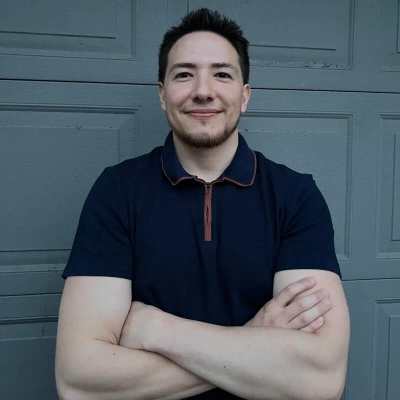
Teacher Skills Transform Distressed Sales Approach
I took an innovative approach by allocating capital toward education and empathy training for my team rather than just marketing spend. Coming from my teaching background, I realized that many homeowners in distress situations needed someone who could truly listen and guide them through complex decisions, so I invested in training my team to handle these conversations with the same patience I used in the classroom. This human-centered approach has led to stronger relationships with sellers, higher referral rates, and ultimately allowed us to grow from helping a handful of families to hundreds, because people trust us to treat them with dignity during what's often the most stressful time in their lives.
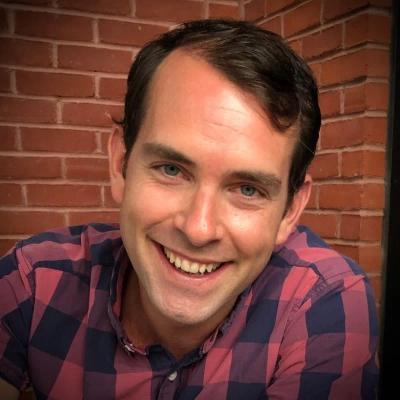
Flexible Purchase Options Create Win-Win Deals
I started allocating part of our capital toward creating flexible win-win purchase options for sellers--like leaseback or delayed move-out agreements--instead of using every dollar strictly for acquisitions. It gave us access to homes before they ever hit the market and helped sellers feel more comfortable working with us. That small shift not only opened new deal flow but also built trust-based relationships that continue to drive our steady growth today.

All-Cash Strategy Speeds Complicated Transactions
Early on, I made the decision to keep 100% of my capital in-house rather than partnering with other investors or bringing on outside money. That meant slower initial growth, but it gave me complete control over which notes I could buy and how quickly I could close deals. Over time, this positioned American Funding Group as the go-to buyer for complicated notes that needed immediate cash and flexible terms--something heavily capitalized competitors with investor committees and approval processes simply couldn't match. That speed and flexibility became our competitive advantage and allowed us to build deep trust with note holders nationwide.

Covering Seller Costs Removes Transaction Barriers
I allocated a dedicated portion of our capital to cover all seller closing costs and fees upfront, which is highly unusual in distressed property transactions. For example, when homeowners facing foreclosure couldn't afford even minor expenses, this approach let them walk away with pure cash in hand without deductions or surprises. This eliminated a major barrier to closing deals, accelerated our transaction volume, and built such strong referral momentum that we've expanded from local Baltimore deals to serving hundreds of clients across the Mid-Atlantic.

Bulk Purchases From Park Owners Accelerate Growth
When we started We Buy SC Mobile Homes in 2021, I made the decision to allocate capital toward purchasing manufactured homes in bulk directly from park owners who wanted to exit quickly, rather than buying properties one at a time from individual sellers. This gave us immediate inventory at a significant discount and let us renovate multiple units simultaneously, which meant we could turn around 150 transactions in just a few years instead of the typical 20-30 most investors complete in that timeframe.

Rent-to-Own Program Builds Monthly Income
I made the bold decision to allocate a chunk of our capital toward creating a rent-to-own program for distressed homeowners rather than just flipping every property we acquired. This meant we'd hold onto certain houses longer and generate monthly cash flow while helping families who couldn't qualify for traditional financing stay in their homes. It completely transformed our business model from purely transactional to relationship-based, and now about 30% of our portfolio generates steady monthly income while we still maintain the option to sell when the market timing is right.

Military Market Focus Maximizes Deployment Velocity
I implemented a 'deployment velocity' strategy where I deliberately allocated capital toward properties requiring minimal work but in emerging neighborhoods. As a veteran, I recognized that areas near military bases often appreciate faster due to BAH increases, so I focused my purchases there instead of chasing already-established markets. This approach allowed us to complete more transactions with the same capital base--we could buy, quickly refresh, and sell three homes in transitioning military neighborhoods in the time it would take competitors to complete one major renovation in a prime area, which has dramatically accelerated our portfolio growth while serving fellow veterans in the process.
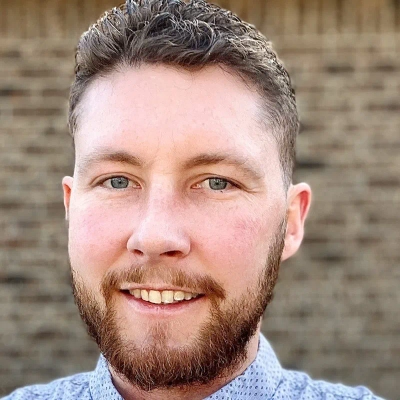
Targeting Complex Properties Creates Niche Market
I've implemented a 'value-based selection' approach to capital allocation, focusing on properties with specific challenges that scare away most investors but are relatively simple for us to fix. Using my financial background, I developed a tiered investment model that allocates our resources based on problem complexity rather than just purchase price. This strategy allowed us to acquire properties with title issues, lien complications, or unusual ownership situations that others avoid, essentially creating our own niche market in coastal North Carolina with significantly less competition and better margins than traditional fix-and-flips.
Supplier Development Outperforms Marketing Spend
One innovative move we made at SourcingXpro was shifting part of our capital from advertising into supplier development. Instead of spending heavily on marketing, we invested in helping our top suppliers upgrade packaging, logistics, and compliance standards. That boosted delivery speed and quality, which in turn increased repeat clients by 40% within a year. It proved that investing in the foundation, not just visibility, drives sustainable growth. The approach turned suppliers into partners—and their success became our best marketing. Smart capital allocation isn't about cutting costs; it's about funding what compounds value over time.
